Hebrew: אירוס שחום, Arabic: سوسن جلعاد - كحيلة الكلب
| Scientific name: | Iris atrofusca Baker | |
| Synonym name: | Iris loessicolaT. Kushnir | |
| Common name: | Dark-brown iris, Gilead iris, Loess Iris | |
| Hebrew name: | אירוס שחום | |
| Arabic name: | سوسن جلعاد - كحيلة الكلب, Jal'ad Iris | |
| Family: | Iridaceae, אירוסיים |
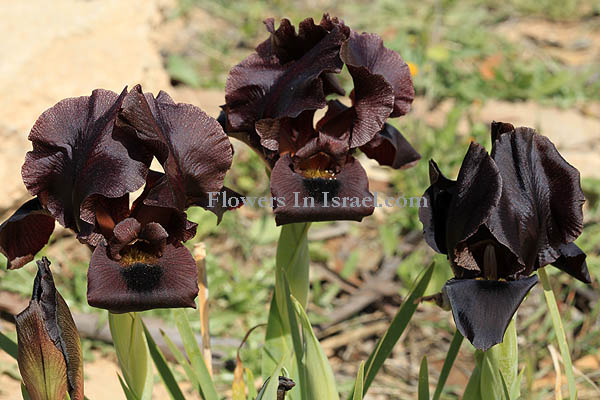
|
| Life form: | Geophyte | |
| Stems: | 30-40 cm high | |
| Leaves: | Alternate, rosette, entire, smooth | |
| Flowers: | Brown, black | |
| Fruits / pods: | Capsule which opens up in three parts to reveal the numerous seeds within | |
| Flowering Period: | April | |
| Habitat: | Batha, Phrygana | |
| Distribution: | Mediterranean Woodlands and Shrublands, Semi-steppe shrublands | |
| Chorotype: | Irano-Turanian | |
| Summer shedding: | Ephemeral |
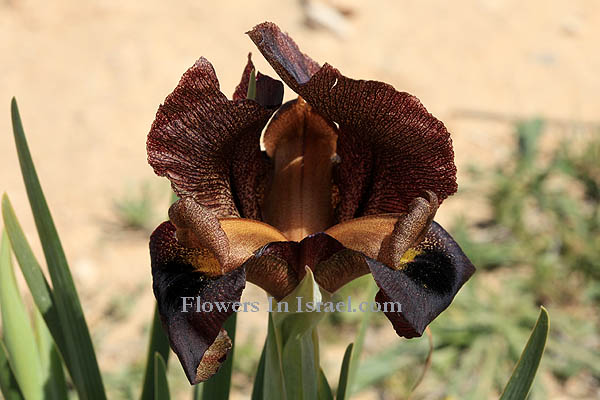
Derivation of the botanical name: Iris, ιριϛ, ιδοϛ, rainbow; female messenger, announcer of the gods, the Greek goddess of the rainbow. atrofusca, from ater, "black, sable, dark, gloomy", and fuscus, "dark, dusky, swarthy"; very dark. loessicola , loess, loose fertile soil, red loam; -cola, -dweller; dwelling in loose fertile soil. The Hebrew name: אירוס, iris, transliteration from the scientific name.
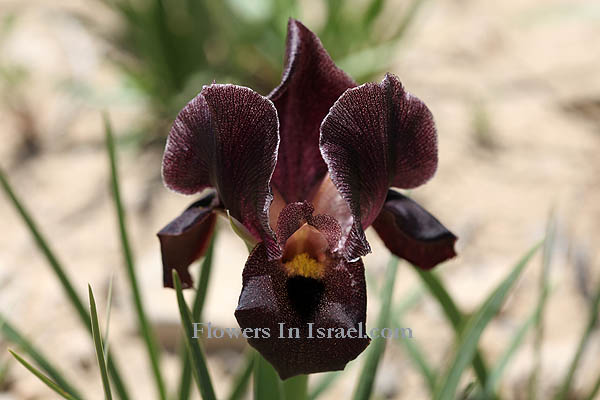
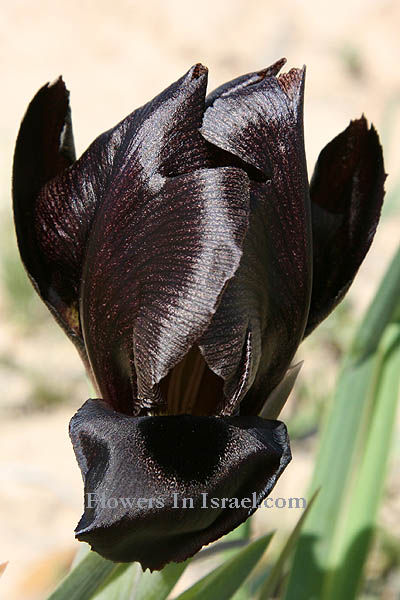
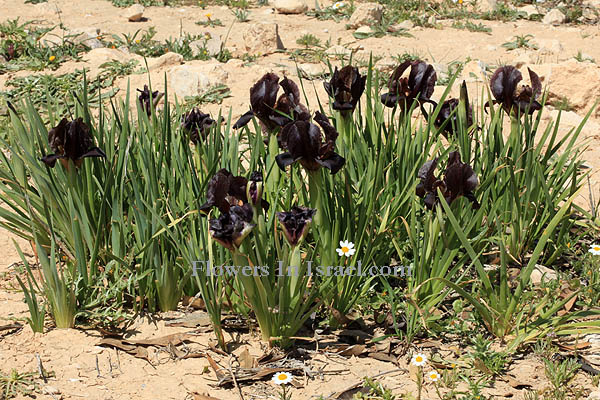
|